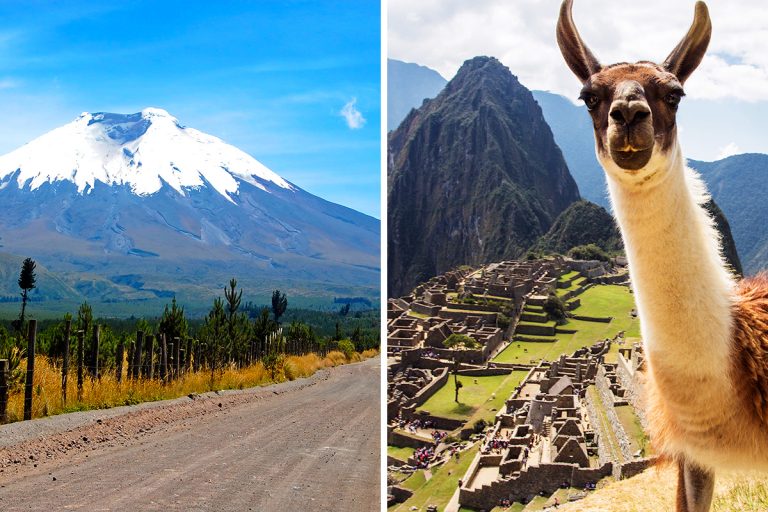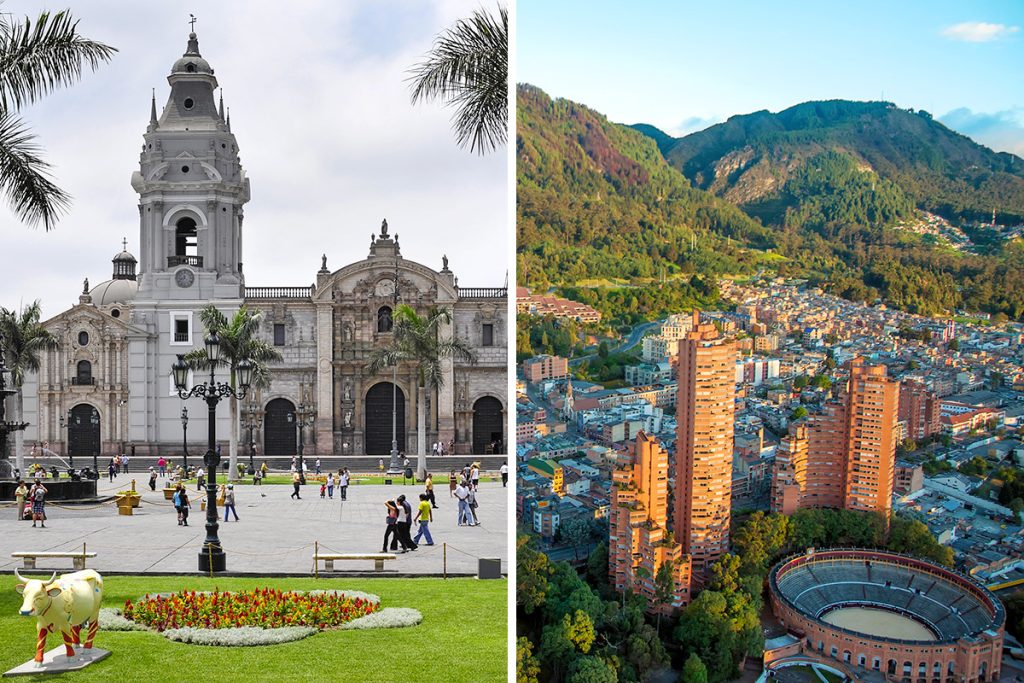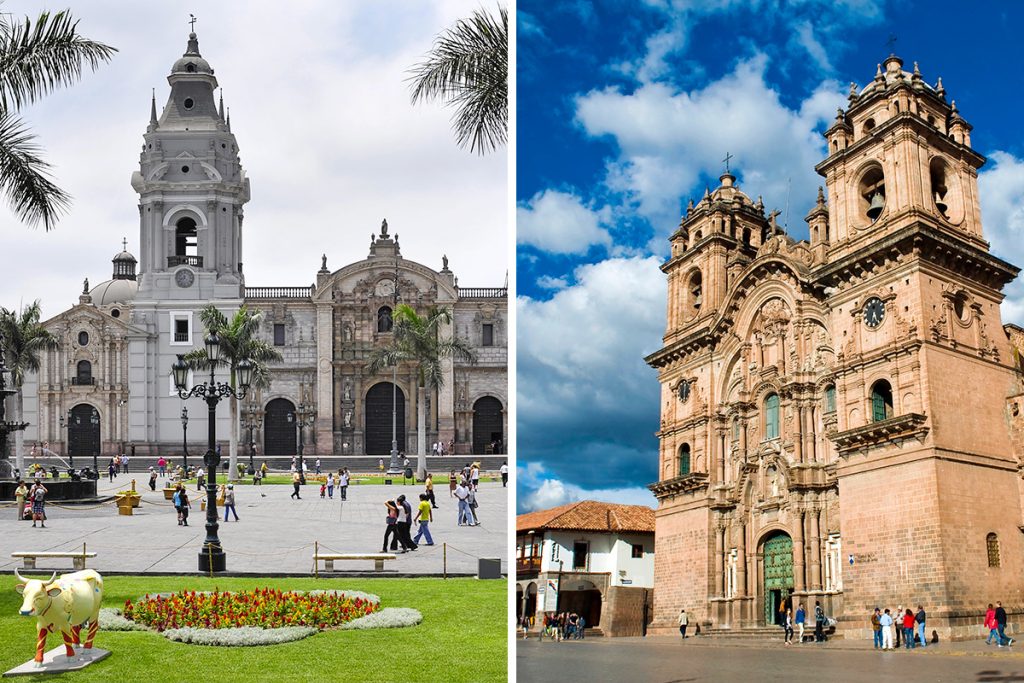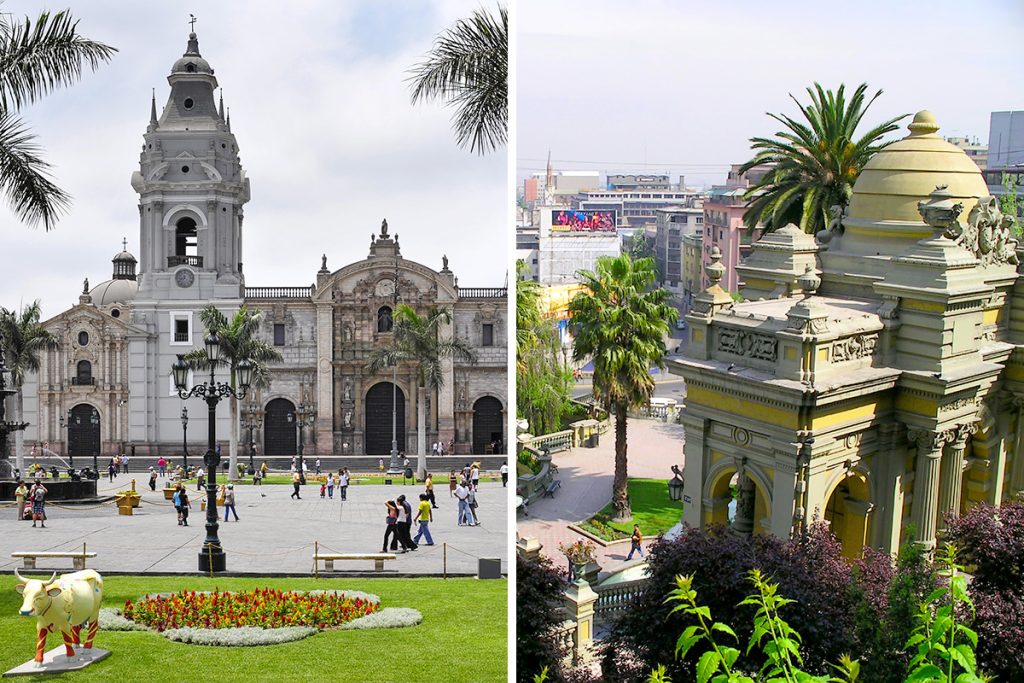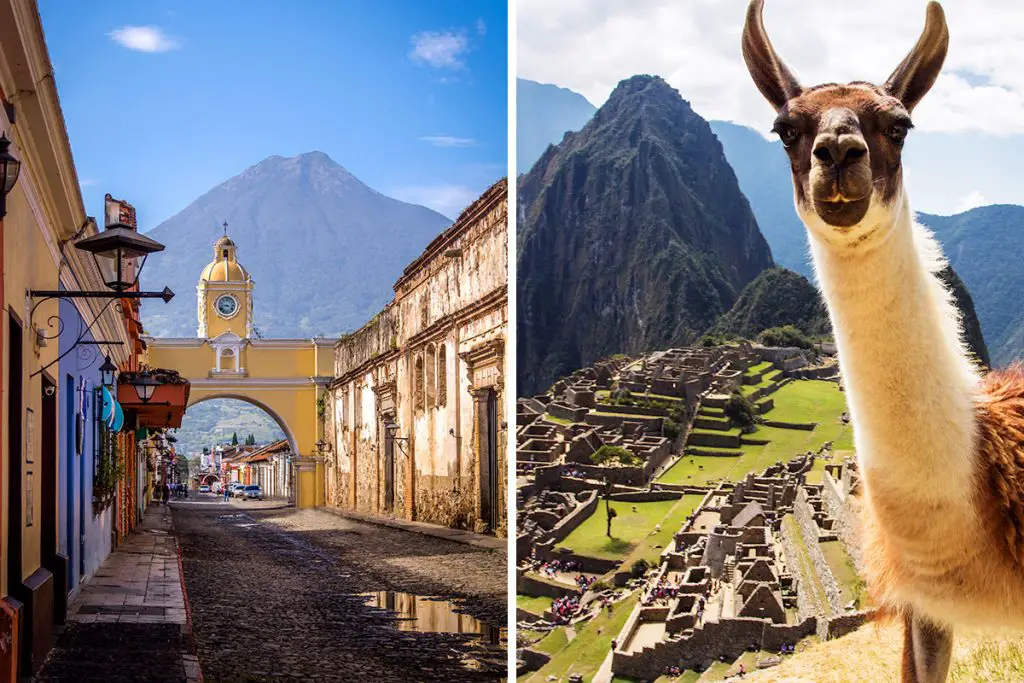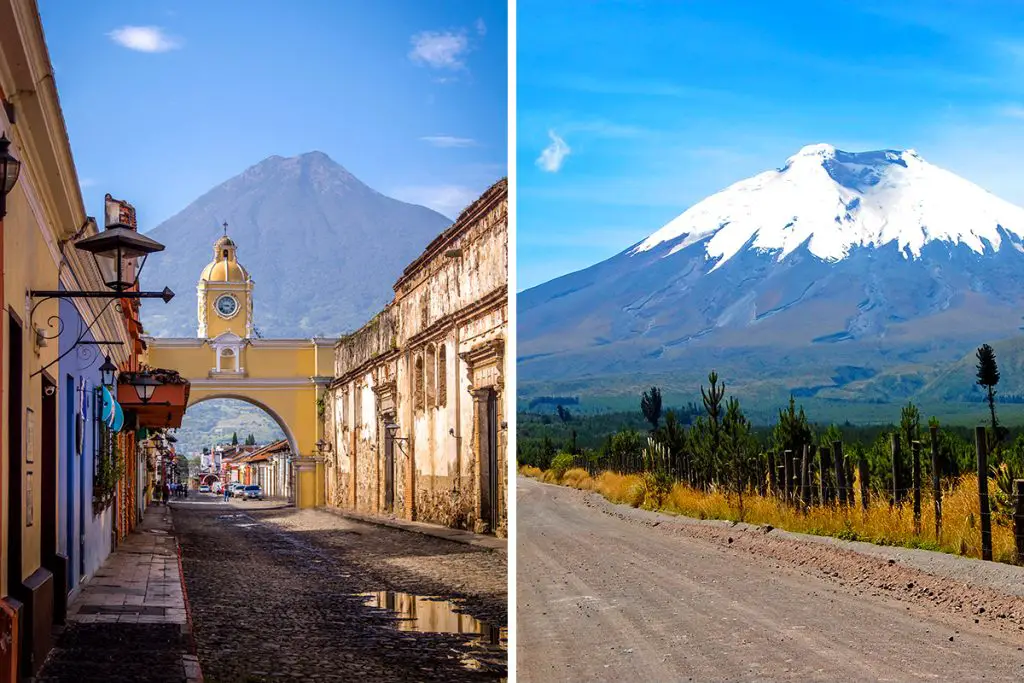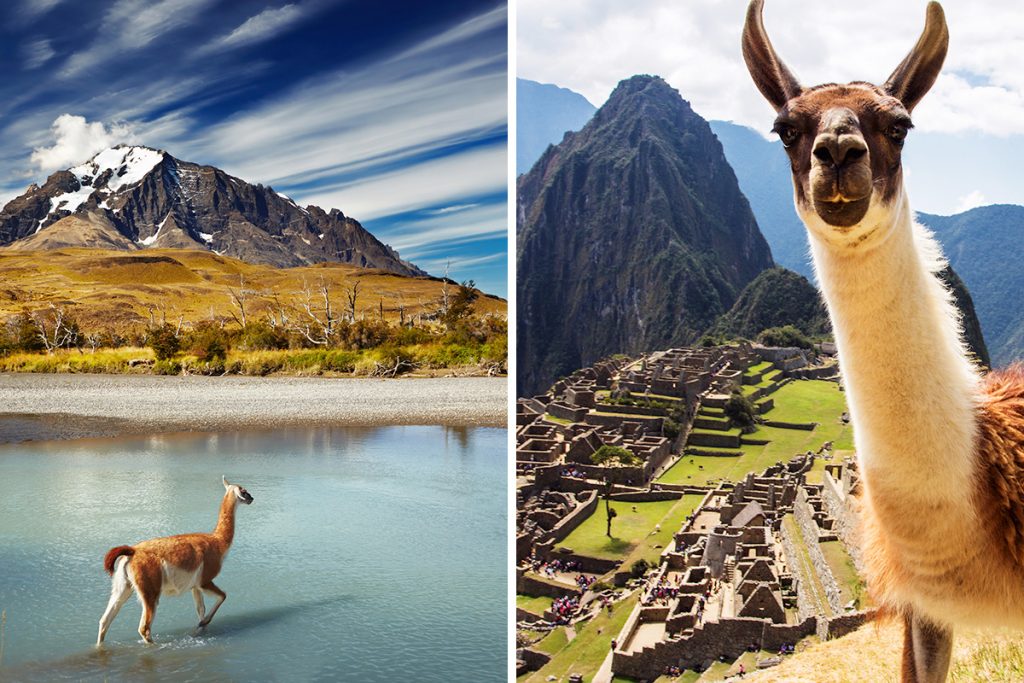Each country has its own unique charm and countless opportunities for exploration. Whether you’re interested in historical sites, diverse wildlife, or awe-inspiring natural wonders, both Ecuador and Peru have something to offer. Keep reading to discover the highlights of each destination and make an informed decision for your next unforgettable journey.
History & Culture
Understanding the history and culture of Ecuador and Peru can help you appreciate your journey even more. Both countries have rich pasts filled with fascinating stories and traditions.
In Ecuador, the history spans from ancient civilizations to Spanish colonization. The Inca Empire had a significant influence on the culture and traditions still visible today. Traditional music and dance, as well as indigenous languages like Quechua, play a vital role in Ecuadorian culture.
Peru, on the other hand, is famous for its Inca heritage. The ancient civilization left an indelible mark on the country’s culture and history. Besides the Incas, many other pre-Columbian civilizations shaped Peru’s cultural landscape, making it a melting pot of traditions and beliefs.
Both countries share similarities in their colonial past, as the Spanish conquistadors left their imprint on the region. Colonial architecture and the Spanish language are prevalent in both Ecuador and Peru.
However, each country has its unique cultural expressions. In Ecuador, you’ll find a strong indigenous presence, with diverse ethnic groups preserving their customs and way of life. Peru is known for its vibrant festivals, blending indigenous and Catholic traditions in colorful celebrations.
In conclusion, both Ecuador and Peru have deep historical roots and rich cultural heritage. While they share similarities in their past, each country offers unique experiences and insights into their distinct traditions.
Attractions & Activities
Ecuador and Peru offer a variety of attractions and activities, making them appealing destinations for different types of travelers. In this section, you’ll find comparisons to help you decide which country suits your preferences.
Ecuador’s main attraction is the Galapagos Islands, where you can observe unique wildlife up close. Besides the islands, the country offers stunning landscapes, from the Amazon rainforest to the Andes mountains. Adventure seekers can enjoy activities such as hiking, birdwatching, and mountain biking.
In Peru, the ancient Inca citadel of Machu Picchu is a must-visit site. The country is also home to other fascinating archaeological sites, like the Nazca Lines and the Sacred Valley. Outdoor enthusiasts can embark on the famous Inca Trail or explore other trekking routes in the Andes.
Both countries have impressive national parks, showcasing their biodiversity. Ecuador’s Yasuni National Park and Peru’s Manu National Park are two examples of protected areas teeming with wildlife and lush vegetation.
For art and history lovers, the capital cities of Quito (Ecuador) and Lima (Peru) offer museums, galleries, and historic sites to explore. Each city has its unique charm and architectural style, providing a glimpse into the countries’ past.
Ecuador and Peru have vibrant local markets where you can experience the daily life of the locals. In Ecuador, the Otavalo Market is famous for its handmade crafts, while in Peru, the Pisac Market is known for its traditional textiles.
To sum up, both Ecuador and Peru boast a wide range of attractions and activities. Whether you’re interested in wildlife, outdoor adventures, or immersing yourself in history and culture, these countries have something to offer for every traveler.
Beaches
If you’re a beach lover, Ecuador and Peru offer some beautiful coastal spots to relax and soak up the sun. Each country has unique beaches with different characteristics and attractions.
Ecuador’s beaches are known for their warm waters and diverse landscapes. Montañita is a popular beach town, attracting surfers and partygoers alike. Salinas is another favorite, with its modern beachfront and calm waters, perfect for swimming and sunbathing. The nearby wildlife sanctuary at La Chocolatera offers a chance to spot sea lions and birds.
Peru’s beaches, on the other hand, feature colder waters but still provide stunning vistas. Punta Sal is a luxurious beach resort area, where you can enjoy sandy shores and clear blue seas. Máncora is another popular destination, with fantastic surf spots and a lively nightlife scene.
For wildlife enthusiasts, Paracas National Reserve offers pristine beaches and opportunities to observe marine life, such as sea lions and dolphins.
Both countries have excellent beach options for different interests. Ecuador’s beaches tend to have warmer waters and more diverse landscapes, while Peru’s beaches offer a mix of luxury, surfing, and wildlife experiences.
In conclusion, whether you prefer sunbathing, surfing, or exploring nature, Ecuador and Peru have beach options that cater to various tastes. Consider your preferences when choosing which country’s coastal attractions best suit your desires.
Eating, Drinking & Nightlife
Exploring the eating, drinking, and nightlife scenes in Ecuador and Peru can enhance your travel experience. Both countries have their unique culinary offerings, drinking establishments, and evening entertainment options.
Ecuadorian cuisine features a blend of indigenous and Spanish influences, with dishes like ceviche, llapingachos, and guinea pig being local favorites. In the major cities like Quito and Guayaquil, you’ll find a range of international dining options as well.
Peruvian cuisine is renowned worldwide, boasting diverse flavors and ingredients. Lima, in particular, is a food lover’s paradise, with many high-quality restaurants and street food vendors. Signature dishes include ceviche, lomo saltado, and causa.
When it comes to drinking, both countries have local spirits and brews worth trying. In Ecuador, you can sample the traditional aguardiente or taste the local craft beers. In Peru, the iconic Pisco Sour cocktail and Cusqueña beer are must-tries.
Ecuador’s nightlife is centered around cities like Quito and Guayaquil, offering a mix of bars, clubs, and live music venues. Montañita is also a popular party destination along the coast.
Peru’s nightlife scene is most vibrant in Lima, with its wide range of bars, clubs, and live music venues. Máncora is another hot spot for nightlife, particularly among the surfing community.
In summary, both Ecuador and Peru have unique and enticing culinary scenes, as well as lively nightlife options. Your preferences in food, drink, and evening entertainment will help determine which country best aligns with your tastes.
Shopping
Shopping can be a fun and exciting part of your trip to Ecuador or Peru. Each country has its own unique products, markets, and shopping experiences to offer.
In Ecuador, you can explore traditional markets like Otavalo, famous for its handwoven textiles, crafts, and souvenirs. Quito and Guayaquil also have modern shopping malls, where you can find international brands and local products.
Peru offers a mix of traditional markets and contemporary shopping centers as well. Pisac Market, located in the Sacred Valley, is known for its colorful textiles, jewelry, and pottery. Lima has upscale shopping districts like Miraflores and San Isidro, where you can find designer brands and high-end boutiques.
Both countries are known for their handicrafts, such as textiles, pottery, and silver jewelry. Ecuador is famous for its Panama hats, while Peru is known for its alpaca wool and intricate handwoven textiles.
When it comes to shopping, consider what you’re most interested in purchasing. Ecuador offers more variety in hand-woven textiles, while Peru excels in alpaca wool products.
In conclusion, shopping in Ecuador and Peru provides a mix of traditional markets and modern shopping experiences. Your preferences in products and shopping environments will help you decide which country best aligns with your tastes.
Accommodation
Finding a comfortable place to stay is an essential part of your trip to Ecuador or Peru. Both countries offer a range of accommodation options to suit different budgets and preferences.
Ecuador has a variety of lodgings, from budget hostels and guesthouses to luxury hotels and eco-lodges. Quito, Guayaquil, and popular tourist destinations like Montañita have a wide selection of places to stay.
In Peru, you can also find diverse accommodation options, including hostels, hotels, and boutique properties. Lima and Cusco are known for their variety of lodgings, catering to different budgets and tastes.
Both countries offer unique accommodation experiences, such as eco-lodges in the Amazon rainforest or traditional haciendas in the Andean highlands.
When choosing accommodation, consider your budget, desired amenities, and location. Each country has options that cater to different preferences and price points.
In summary, both Ecuador and Peru provide a range of accommodation choices to suit various needs. Your preferences in budget, amenities, and location will help determine which country best matches your accommodation requirements.
Family-Friendliness & Children’s Activities
When traveling with family, it’s important to find destinations that cater to all ages. Ecuador and Peru both offer fun and educational experiences for children and adults alike.
In Ecuador, you can visit the interactive museums in Quito, like the Mindalae Ethnographic Museum, where kids can learn about Ecuadorian culture. Galapagos Islands provide unique wildlife encounters that will captivate the whole family.
Peru also has many family-friendly attractions. Lima has several interactive museums, such as the Children’s Museum of Lima, perfect for young explorers. In Cusco, you can take a family-friendly walking tour to explore the rich history of the city.
Both countries have numerous outdoor adventures suitable for families. In Ecuador, you can explore Cotopaxi National Park or go whale watching off the coast. Peru offers family treks in the Sacred Valley and sandboarding in Huacachina.
When choosing a destination for your family vacation, consider the types of activities your family enjoys. Both Ecuador and Peru offer a mix of cultural, educational, and outdoor experiences to delight travelers of all ages.
In conclusion, Ecuador and Peru provide a variety of family-friendly attractions and activities. Your family’s interests and preferences will help you decide which destination is the best fit for your vacation.
Getting There & Getting Around
Traveling to and around Ecuador and Peru is an important consideration when planning your trip. Both countries have their own transportation options and infrastructure.
To reach Ecuador, international flights typically land in Quito or Guayaquil. From there, you can connect to other destinations within the country. Peru’s main international airport is in Lima, with connections to other cities like Cusco and Arequipa.
Once in Ecuador, you can travel by bus, taxi, or rental car. Buses are affordable and cover most of the country, while taxis and rental cars offer more flexibility. Ecuador is a small country, making it relatively easy to explore.
Peru’s transportation options include buses, taxis, rental cars, and domestic flights. Buses are widely used and economical, while taxis and rental cars provide convenience. Domestic flights are a faster option for covering long distances.
Both countries have train services, with Ecuador’s Tren Crucero offering scenic journeys through the Andes. In Peru, trains connect Cusco to Machu Picchu and Puno, offering stunning views of the countryside.
In summary, Ecuador and Peru have various transportation options for getting there and getting around. Your preferences in convenience, budget, and travel experiences will guide you in choosing the right destination for your trip.
Weather
When planning your trip, weather can be a deciding factor. Ecuador and Peru have distinct climates, which can impact your travel experience.
Ecuador, located on the equator, has a year-round warm climate. Coastal areas are hot and humid, with temperatures ranging from 68°F (20°C) to 86°F (30°C). In the Andean highlands, temperatures are cooler, averaging 50°F (10°C) to 70°F (21°C).
Peru, on the other hand, experiences more significant seasonal variations. Coastal regions have warm summers from December to April, with temperatures between 77°F (25°C) and 86°F (30°C). Winters are cooler and more humid, averaging 59°F (15°C) to 68°F (20°C). The Andes in Peru have a rainy season from November to March, and a dry season from April to October.
Both countries have unique microclimates, so research the specific regions you plan to visit. For example, the Galapagos Islands in Ecuador and the Amazon rainforest in Peru have their own weather patterns.
Considering your preferred activities and the time of year you plan to travel will help determine which destination is best for you, weather-wise.
In summary, Ecuador offers more consistent weather throughout the year, while Peru has greater seasonal variations. Choose the destination that best aligns with your travel preferences and activities.
Safety
Safety is an essential aspect of any travel destination. Both Ecuador and Peru have their safety concerns, but taking precautions can help ensure a secure trip.
In Ecuador, petty crime like pickpocketing and bag-snatching can occur, especially in crowded areas. Similarly, Peru has instances of petty crime, particularly in tourist-heavy locations.
To minimize risks in both countries, be aware of your surroundings and keep your belongings secure. Avoid displaying valuable items and stay vigilant when using ATMs or public transportation.
Natural hazards are another safety concern in both destinations. Ecuador is prone to volcanic activity and earthquakes, while Peru experiences occasional flooding and landslides in the Andean region.
Stay informed about local news and weather updates to avoid potential hazards during your trip. Register with your embassy for assistance in case of emergencies.
Ecuador and Peru have unique safety concerns, but with proper precautions and vigilance, both destinations can be enjoyed safely.
In conclusion, both Ecuador and Peru have safety concerns related to petty crime and natural hazards. By staying informed and taking precautions, you can enjoy a safe and memorable trip to either destination.
Cost
Budget is often a crucial factor when planning a vacation. Comparing costs between Ecuador and Peru can help you make an informed decision.
In Ecuador, daily expenses for food, transportation, and activities can be quite affordable. A meal at a local restaurant costs around $3 to $5 (9 to 15 PEN). Bus fares range from $0.25 to $0.50 (0.75 to 1.50 PEN).
Peru is also a budget-friendly destination, with similar costs for food and transportation. A typical meal at a local eatery costs between $2 to $4 (6 to 12 PEN), while bus fares vary from $0.30 to $0.60 (0.90 to 1.80 PEN).
Accommodation costs in both countries depend on the type and location of the lodging. In Ecuador, budget hotels and hostels cost around $10 to $20 (30 to 60 PEN) per night, while mid-range options range from $30 to $60 (90 to 180 PEN). Peru offers similar prices, with budget accommodations at $10 to $20 (30 to 60 PEN) and mid-range options between $35 to $70 (105 to 210 PEN).
When considering activities and attractions, both Ecuador and Peru offer a mix of free and paid experiences. It’s essential to research specific costs based on your interests and itinerary.
In conclusion, both Ecuador and Peru are affordable destinations with comparable costs for food, transportation, and accommodation. Your overall expenses will largely depend on your preferences and chosen activities.
Which Is Better – Ecuador or Peru?
Deciding between Ecuador and Peru can be a challenge, as both countries offer unique experiences and attractions.
In terms of history and culture, Ecuador boasts well-preserved colonial architecture, while Peru is home to the iconic Machu Picchu and other Inca sites. Choose the destination that best aligns with your interests in historical exploration.
For attractions and activities, Ecuador offers the Galapagos Islands and diverse wildlife, while Peru is famous for its Andean treks and Amazon adventures. Your preference for outdoor experiences or wildlife encounters will guide your decision.
Regarding beaches, Ecuador has beautiful, warm coastal areas, while Peru features colder waters and dramatic landscapes. Your ideal beach experience will determine the best choice for you.
For food, drink, and nightlife, both countries offer a rich culinary scene and vibrant nightlife. Your taste buds may lean toward Ecuador’s coastal flavors or Peru’s Andean cuisine.
When considering family-friendliness and children’s activities, both destinations offer a range of options. Consider your family’s preferences for outdoor adventures, cultural experiences, or wildlife encounters.
Lastly, regarding cost, both Ecuador and Peru are affordable destinations with similar price ranges. Your overall expenses will depend on your specific plans and preferences.
Ultimately, the choice between Ecuador and Peru will depend on your personal interests and priorities. Both countries offer rich cultural experiences, natural wonders, and unforgettable adventures. By considering the factors discussed in this article, you’ll be well-equipped to make an informed decision and plan a memorable trip to either Ecuador or Peru.

